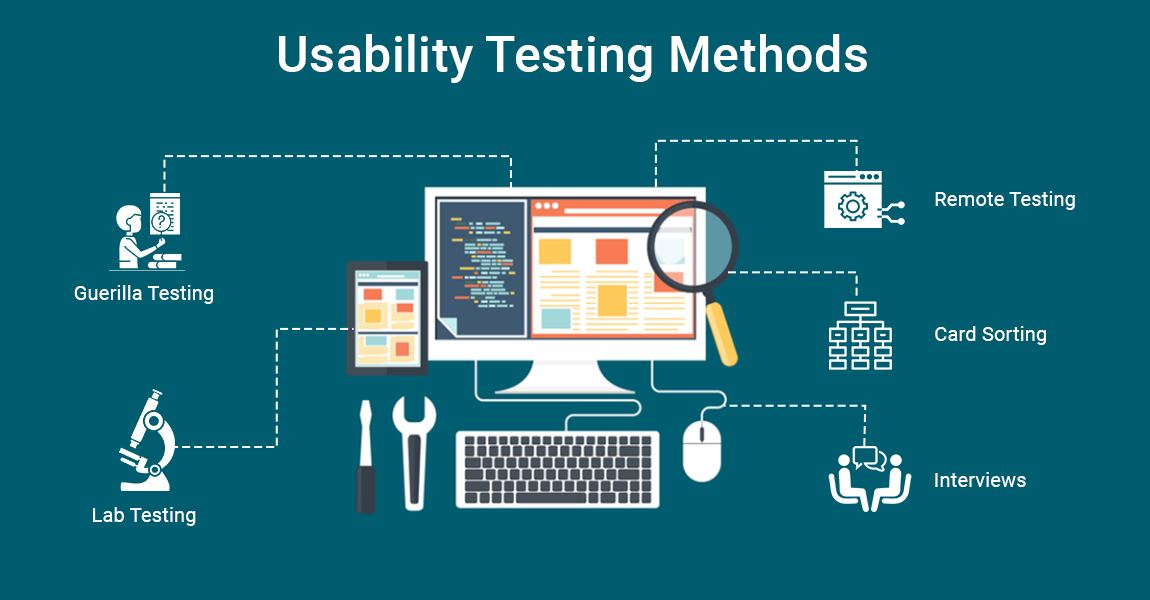User Experience (UX) is key to whether you are building an app, website or embarking on a full-scale digital transformation project. Usability testing can help you measure user experience, identify errors and let you correct them before the launch. It can be a deciding factor in the success or failure of your project.
Digital technologies are dramatically reshaping industry after industry, compelling businesses to pursue large-scale digital transformation initiatives to realize the gains of these trends or to simply keep up with the competitors.
In some industries, digital transformation has become a key to survival and success. The current COVID-19 pandemic has also led to many businesses putting their digital transformation projects on top gear. A survey by Boston Consulting Group highlights that over 78% of managers and 57% of employees think that their companies are in the midst of a digital transformation.
Why Usability Testing is Important in Digital Transformation?
Digital Transformation is the integration of digital technologies into a business process and fundamentally transforming the way a business operates and serves its customers. It is the process of adopting digital technologies in manual and non-digital processes and replacing old technologies with new digital technologies. Netflix and Uber are good examples of digital transformation wherein the companies changed the way people entertain or hire a cab.
Although the digital transformation of business is not new, there’s a serious focus on the confluence of customer demands. It is forcing businesses to put the user experience at the core of the digital transformation strategy as users demand easy-to-use, seamless and personalized experiences. And they are ready to switch loyalties for better experiences. This has made usability testing a key step in digital transformation projects. Let’s look at a few stats to better understand the importance of customer experience and usability testing.
- Studies have found that companies that focus on customer experience clock a 4-8% increase in revenues compared to others.
- 97% of mobile app users place ease of using the app as the highest priority.
- Every $1 that is being invested in UX returns $100.
- Good user experience can raise conversion rates by as much as 400%.
Usability testing or User Experience (UX) Testing is a method of measuring the ease-of-use and user-friendliness of an application. The usability testing in digital transformation mainly focuses on the ease of using the application, intuitiveness in handling the app and how easily and quickly a user is able to meet his/her objectives on the app. Usability testing helps you know how users will use the app before the launch so that you can improve its experience and performance.
The goal of usability testing is to assess and understand:
- Is the app or the digital tool easy to use?
- What are the pain points in using the apps?
- At which stage is the user dropping off from the app?
- Is the digital system engaging?
- Is it providing the user’s the experience they want?
- Is it motivating the users to take the action which the business intends?
Once you have answers to the above questions then you can redesign the app, remove bugs, and optimize the path to the goal etc.
Usability Testing in digital transformation can provide you with several benefits including:
- Improved conversion rates and more business
- Increased user satisfaction leading to customer loyalty
- Increased adoption of apps & tools
- Optimum RoI from investments
Design Thinking & Usability Testing: Why it is Critical for B2C Applications?
B2C applications thrive on user experiences. If the experience is not good, it will lead to app uninstalls and criticism from users. With business providing omnichannel experiences, customers today have at their disposal multiple touchpoints to engage with a business. Also, B2C app usage is different as it is used by users while walking, jogging, travelling and working. So, they need to be convenient for usage in all modes and environments.
This has put a lot of pressure especially on B2C businesses to ensure a unified and consistently high-quality user experience across all their channels to woo customers and get business from them. It is therefore imperative for B2C businesses to make sure that the usability of their apps or customer touchpoints is highly optimized and delivering experiences as per the customer expectations.
At Gemini Consulting & Services, we understand the importance of user experiences in digital transformation programs. We believe in continuous testing at various stages in the project to ensure that all the apps and other software are built as per the modern design and usability trends. Usability testing is central to all our digital transformation projects and our experienced UX designers and Usability experts are perfectly capable to deliver digital solutions that offer seamless, intuitive and engaging user experiences to your customers. Contact us to know more about our usability testing services.
Usability Testing for Internal and External Processes
While many businesses focus on usability testing for external or customer touchpoints but don’t give much priority to employee-centric or internal processes. A digital transformation project encompasses the entire organization. Moreover, your employees too are used to using apps and software in their personnel lives that are high on user experience. If they don’t get the same experience from their office apps then they are less likely to use them. So, to make your digital transformation project a success, you need to ensure that your apps and digital platforms are offering optimized UX both internally and externally.
More than ever before, today’s user experience is defining the business success. Poor experience on your website, app or any other digital touchpoint can result in not only loss of a business opportunity but also the customer forever. In this age of instant gratification, very rarely do business gets a second chance from customers. Usability testing is the best approach to manifest empathy, which is key to the success of any of your digital transformation program. It is well worth the effort to invest in usability testing to ensure delightful digital experiences for your customers.

Guerilla Testing: Guerilla testing involves visiting a public place like a coffee shop or a restaurant and ask people randomly to test your prototype.- Lab Testing: It is a testing run in labs and supervised by the researcher. During the test, researchers invite test participants to their labs, ask them to perform some tasks on the prototype, gather their feedback in real-time.
- Remote Testing: This testing can be moderated as well as unmoderated. The participants are asked to complete certain tasks using their own devices at their home or office. The researcher uses screen sharing tools or remote testing software to record the way participants are using the prototype.
- Card Sorting: This type of testing works well for prioritizing features or content in a product. It involves creating cards for features/content types and ask participants to sort them as per their preference. The researcher can ask participants to explain the reason behind their preferences.
- Interviews: This can be in-person or through the online and phone. The researcher asks participants to complete a few tasks on the prototypes and then asks a set of questions and collects their feedback.
Usability Testing Best Practices
- Planning the Session: Take time to plan the session. Set your goals and objectives, identify tasks for the participants and the software you would need for the session.
- Calling up the Participants: It would be fantastic if you can get participants from your target audience. But, in case, you’re not getting them then find a close match of it with the same age group, gender etc.
- Designing the Tasks: Design specific tasks for users that will help you reach your testing objectives. Don’t just ask users to use the product but ask them to do a specific thing like opening an account in the app, playing a level of a game etc.
- Managing the Session: Start with explaining the objective to the participants, and the tasks they need to do. Ask questions after the tasks are completed. Encourage them to speak in detail about their experiences.
- Analyzing the Results: Start with a quick revision of your goals. Organize the data collected and analyze it qualitatively and quantitatively. Draw conclusions from it, identify issues and prioritize. Document the entire report and findings.



